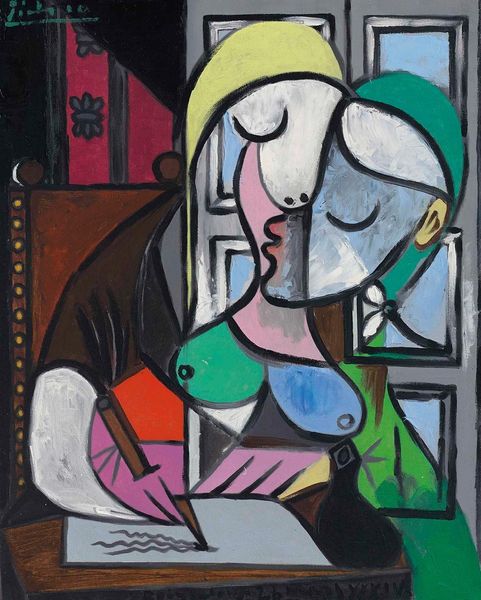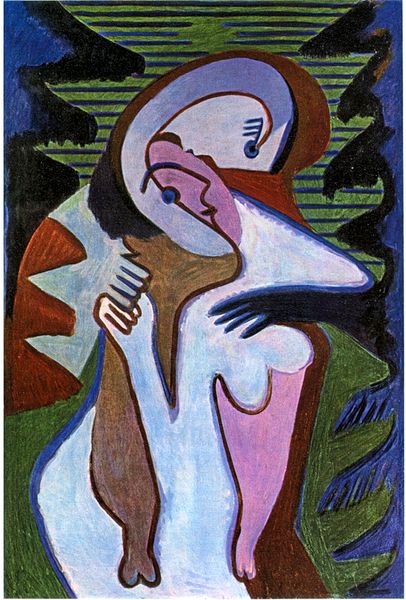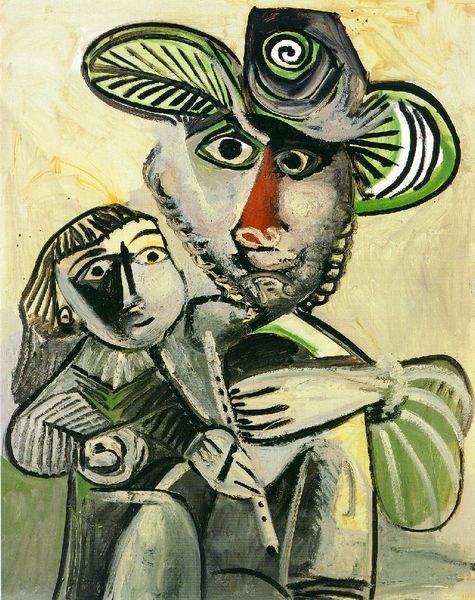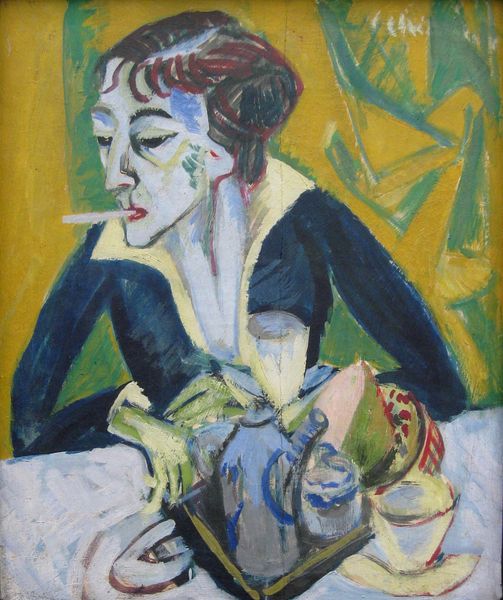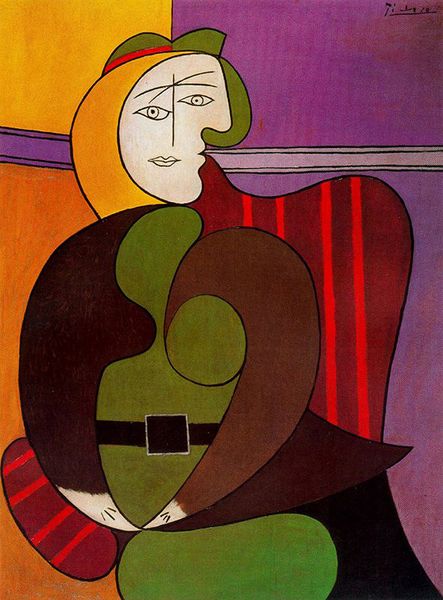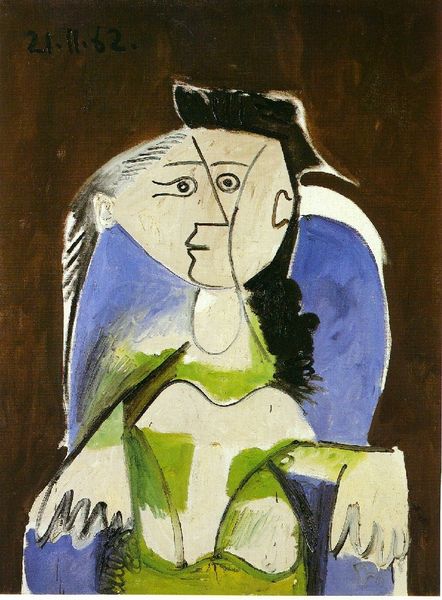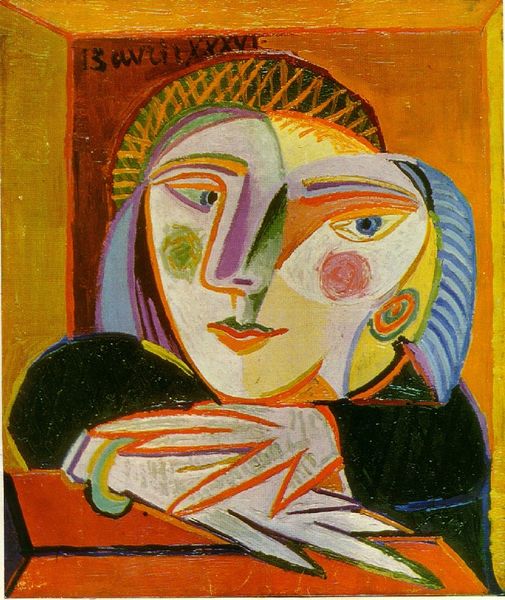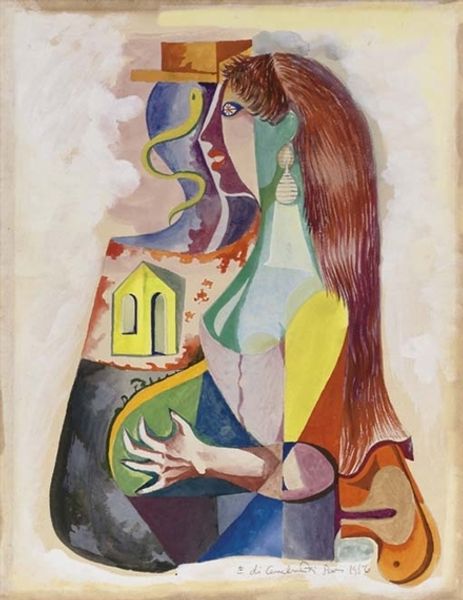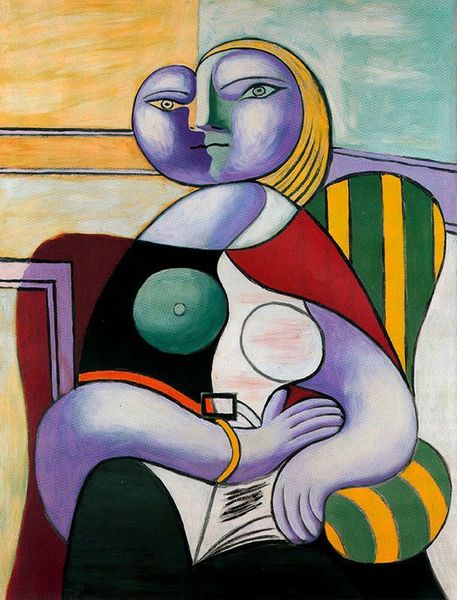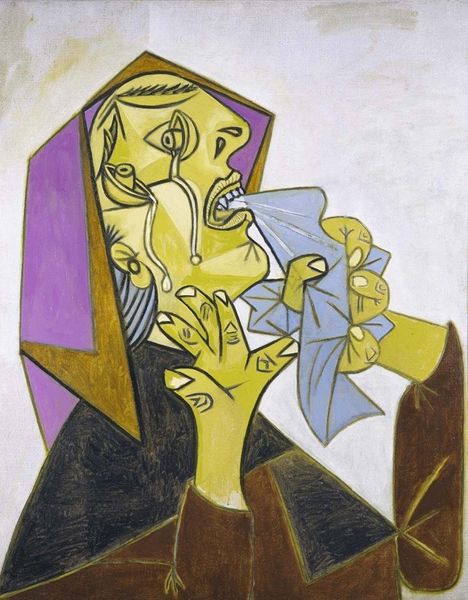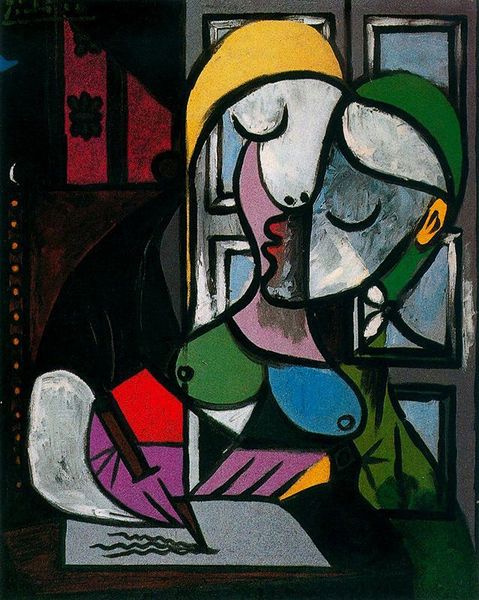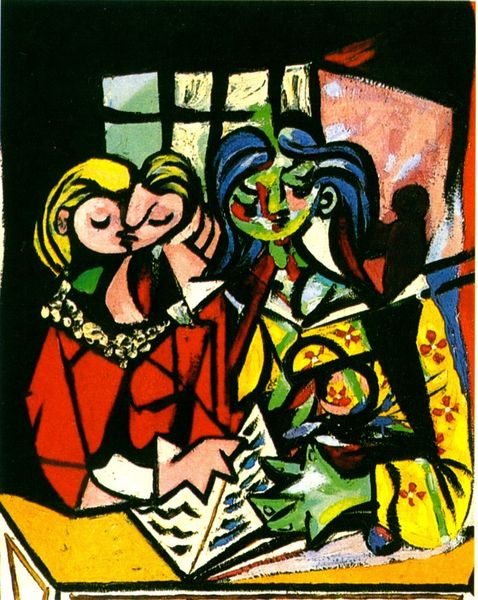
oil-paint
#
portrait
#
cubism
#
mother
#
oil-paint
#
figuration
#
oil painting
#
child
#
portrait art
#
modernism
Copyright: Pablo Picasso,Fair Use
Curator: Here, we're looking at Picasso’s "Mother and Child (Marie-Therese and Maya)," painted in 1938. He captures his lover, Marie-Therese, and their daughter, Maya, in his signature Cubist style. Editor: The immediate feeling I get is of serenity, but there is also something almost dreamlike about it. The colors are so muted—pale blues, greens, lavenders—giving it this otherworldly quality. Curator: The pastel hues create a poignant intimacy between the mother and child, softening the angularity characteristic of his Cubist approach. But let's not overlook the historical context. Picasso painted this work on the brink of World War II. Consider that pervasive anxiety, and it makes the work even more potent. Editor: Exactly. Notice the way Picasso depicts their faces. The mother's eyes are closed, a symbol of peaceful introspection, and yet, the child's singular, open eye feels piercing, as if aware of some looming threat. What is particularly powerful here is that the open eye also symbolizes that the daughter, Maya, can truly “see” Picasso in this moment of intimate vulnerability. Curator: The symbolism you point out definitely offers an important narrative, especially concerning women in Picasso’s life and art. Marie-Therese occupied a unique role, being both lover and mother in the patriarchal system the artist navigated. It calls into question issues of identity, agency, and representation of the feminine in his body of work. Editor: I agree, the interlocking shapes representing their forms remind me of medieval Madonna and Child icons. It's not just about biological relation, it’s a reflection on universal motherhood. We observe tenderness across time, echoing back to a foundational religious paradigm in the west. Curator: Which underscores a continuity we see, and sometimes erase, between art history and modernist endeavors like this one. Bringing forth dialogue on not only Picasso as an artist, but father and lover, enables a deeper view on society and relationality. Editor: This painting allows for contemplation of Picasso, not only in terms of aesthetic innovation but his psychological complexity, which carries weight even today. Curator: It shows us the intersections that run deep, a connection across time and between people that is profoundly necessary.
Comments
No comments
Be the first to comment and join the conversation on the ultimate creative platform.
